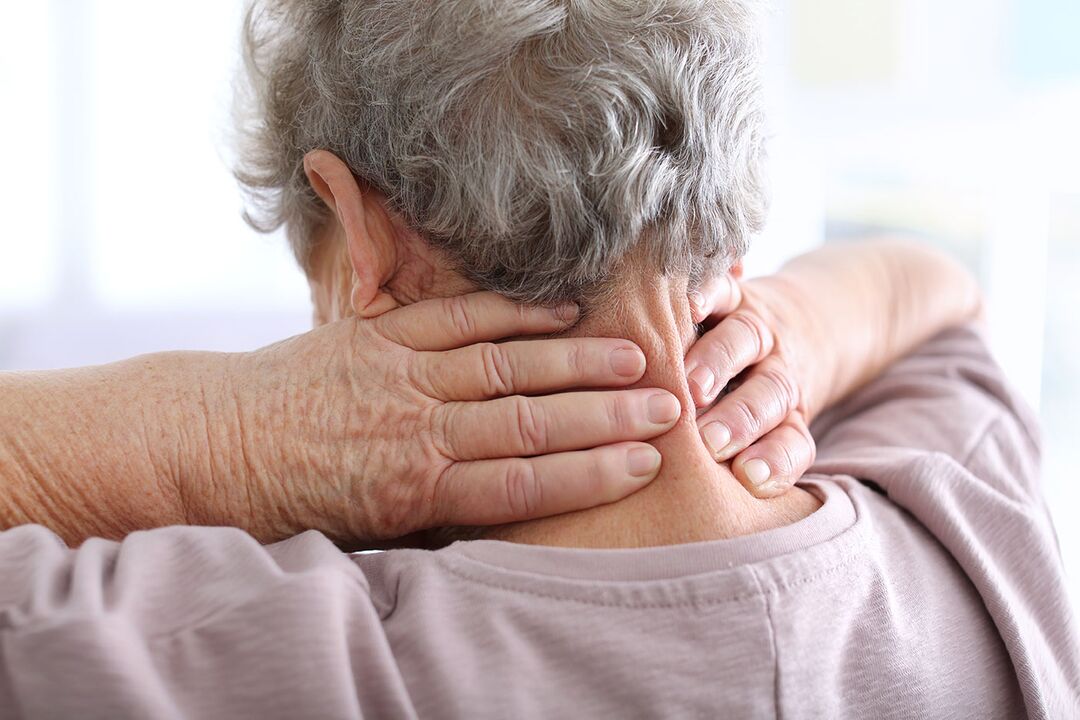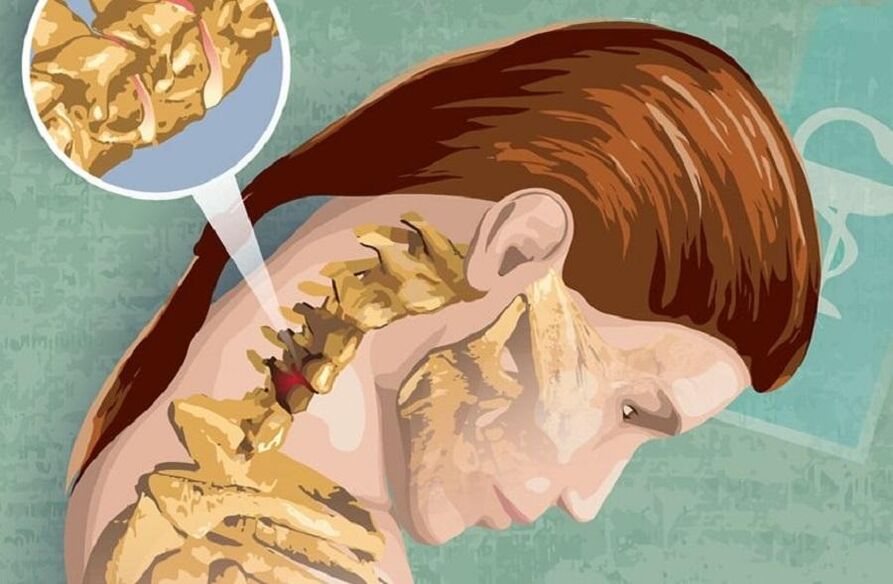In the modern world, the resonance of this disease with tarsal osteonecrosis can hardly be overestimated. Cervical vertebrae are much more common than other vertebral regions. Almost everyone over the age of twenty-five has this condition, to one degree or another.

Cervical fibroids develop primarily as a result of a sedentary lifestyle, especially facilitated by a person's historical transition from manual to mental labor, albeit at a low rate. moderate level, accompanied by work in a sitting position.
Cervical spondylosis is a degenerative-dystrophic disease of the cervical spine, leading to damage to the discs, which is common in cervical spondylosis. Since this part of the spine is by nature quite mobile, but at the same time vulnerable to damage due to an underdeveloped muscle layer, any negative impact on the neck or back affects the neck area first. The fact is that degenerative changes often develop in the most mobile vertebral parts, precisely the nerve endings at the C5 level. . . C7 is most commonly affected in the neck area.
Because the symptoms of cervical osteochondrosis are controversial, they are not always considered symptoms of the disease but often lead to seeking help from specialists in the medical field. other study. Let's look at them in a little more detail.
Symptom
Because the cervical spine is quite small, compared to its other parts, even a little strain in the neck muscles or displacement of the cervical vertebrae can cause compression or compression of the nerve roots. also affects ships located in this division. Well, osteogenesis - bone growth, which in folk treatment is called "salt deposition" and is formed under the conditions of the development of the disease with cervical osteonecrosis, as a result of which onlysignificantly worsen the course of the disease.
The clinical manifestations of cervical osteosarcoma, i. e. its symptoms, can be divided into reflex symptoms and lenticular symptoms of cervical osteosarcoma.
Reflexive symptoms of cervical osteonecrosis

The reflex symptoms of cervical spondylosis include the so-called "low back pain", which is manifested by the appearance of sharp pains in the neck and is markedly increased with any movement. In view of this, patients often have some of the most obligatory, comfortable, head positions. In addition, the typical "creaking" sound is most likely to occur with turning or other head movements.
With fibroids, patients often feel a headache that is compressive and radiates to the eyeball or the temporal part of the head. In addition, sometimes at the same time, the sharpness of visual perception can decrease, as if "everything is floating before the eyes".
Vertebral artery syndrome can also develop, when irritation of its nerve plexus, usually due to dizziness in the patient, is misdiagnosed as a violation of cerebral blood circulation. One such symptom of cervical osteochondrosis may manifest itself with sudden head movements and be complicated by a feeling of nausea and possibly vomiting.
In addition to the above, the reflex symptoms of cervical spondylosis include cardiovascular syndrome, in which there are sensations similar to an angina attack. But such a manifestation of the symptoms of osteonecrosis is often combined with some other complex signs of the disease, so it usually does not cause difficulty in making an accurate diagnosis.
Granular symptoms of cervical osteonecrosis
As a rule, granular symptoms of cervical osteochondrosis appear due to compression of the spinal nerve - the roots. In this case, the sensory disturbance affecting motor functions depends entirely on which specific nerve root is injured, namely:
- C1 - reduced sensitivity in the back of the head;
- C2 - the appearance of pain in the parietal or occipital region of the head;
- C3 - a violation of sensitivity and the appearance of pain in the neck, where the spinal roots are damaged, most likely a violation of speech function, due to the loss of sensitivity and the ability to control the tongue;
- C4 - the appearance of pain and decreased sensitivity in the dorsal region of the joint capsule, as well as pain in the heart and liver region, and decreased muscle tone of the neck and possible respiratory dysfunction of the respiratory organs;
- C5 - reduced sensitivity and pain in the outer surface of the shoulder;
- C6 - pain radiating from the wrist to the collarbone, lateral surface of the shoulder, forearm, and beyond from the wrist to the thumb;
- C7 - pain the same as in C6, but radiating from the scapula to the posterior surface of the shoulder, and further from the forearm to the 2nd to 4th toes, with reduced sensitivity in the painful area;
- C8 - reduced sensitivity and pain from the neck to the shoulder, then from the forearm to the little finger of the hand.
The treatment

Cervical fibroids are a complex and frustrating disease, and treatment requires consistency, time, and stages. First of all, treatment of cervical osteosarcoma is aimed at completely ending the painful symptoms of cervical osteosarcoma and eliminating inflammation in the neck area affected by the disease.
Patients being treated for cervical osteonecrosis are treated with classical analgesics, such as analgin, ketorol, or baralgin. Although recently non-steroidal anti-inflammatory drugs have also been widely available in the treatment of cervical spondylosis, which effectively relieve pain and reduce the activity of the inflammatory response.
Among other things, in the treatment of cervical osteonecrosis, chondroprotectors are also used, which slow down the destruction of cartilage tissue and, according to many experts, also contribute to their regeneration. In addition, the patient is also prescribed the use of B vitamins, which help improve the metabolism in the patient's body.
However, the use of topical gels or ointments to treat cervical osteosarcoma is not effective, but it makes sense, because during the massage into the skin, one will perform an extra movement. massage the cervical spine.
Physiotherapy procedures are supplemented with traditional drug treatment for cervical spondylosis, and in particular, the use of magnetic therapy through special medical devices has causedGaining great resonance among therapists and patients is particularly effective. In addition, in addition to the above uses, there are also therapeutic massages, physical therapy exercises and manual therapy. However, in particularly severe cases of the disease, surgical intervention may also be required.
Prevention of cervical osteonecrosis
By itself, preventing cervical osteochondrosis is not difficult. Encourage:
- maintain an active and healthy lifestyle,
- sports, or at least morning exercises,
- competent organization of the workplace,
- observe the regime of work and rest,
- during prolonged work in a sitting position - during working hours, warm up several times and ensure the correct posture of the head and posture during work.
It is important to choose a pillow and mattress that is comfortable when sleeping. But for those who already suffer from this disease, using specialized orthopedic products every day to have a comfortable sleep is highly recommended.
























